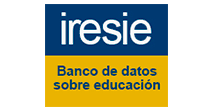AS CULTURAS DE INFÂNCIA E PRODUÇÃO DE SENTIDOS: UM ESTUDO DE RECEPÇÃO MIDIÁTICA COM CRIANÇAS
DOI:
https://doi.org/10.5216/ia.v39i3.28759Keywords:
Culturas de Infância, Mídia-Educação, Recepção, TelenovelaAbstract
Com o objetivo de compreender as relações entre imaginário infantil e recepção televisiva, este estudo discute as interações entre as Culturas de Infância e o processo de recepção das crianças com as telenovelas Carrossel (SBT), voltada ao público infantil. O artigo reconhece a recepção midiática como um processo de interação no qual há produção de sentidos. Observamos a participação dos elementos das Culturas de Infância na interação das crianças com a telenovela como também as manifestações do imaginário infantil em suas produções de sentido. Apoiados na análise de discurso, apresentamos os resultados das apreciações de desenhos e relatos de crianças, fãs da telenovela, interpretados com base no estudo de Sarmento (2004) sobre as Culturas de Infância.
Downloads
Downloads
Published
How to Cite
Issue
Section
License
Inter-Ação uses the Creative Commons Attribution 4.0 License for Open Access Journals (Open Archives Initiative - OAI) as the basis for the transfer of rights. Open access means making documents available on the Internet free of charge, so that users can read, download, copy, distribute, print, search, or link to the full text of documents, process them for indexing, use them as input data for software programs, or use them for any other lawful purpose, without financial, legal, or technical barriers.
Authors publishing in this journal agree to the following conditions:
1) Authors retain copyright and grant the journal the right of first publication, with the work simultaneously licensed under the Creative Commons Attribution License, which permits redistribution of the work with attribution and first publication in this journal.
2) Authors are permitted to enter into additional, separate agreements for non-exclusive distribution of the version of the work published in this journal (e.g., for publication in an institutional repository or as a book chapter), with attribution and first publication in this journal.
3) Authors are permitted and encouraged to publish and distribute their work online (e.g. in institutional repositories or on their home page) at any time before or during the editorial process, as this may generate productive changes as well as increase the impact and citation of the published work.















